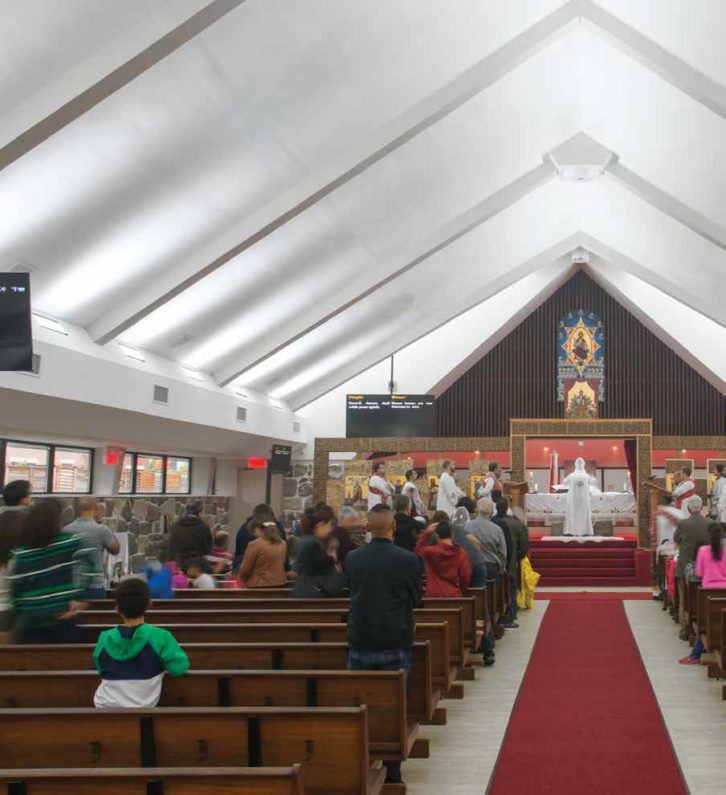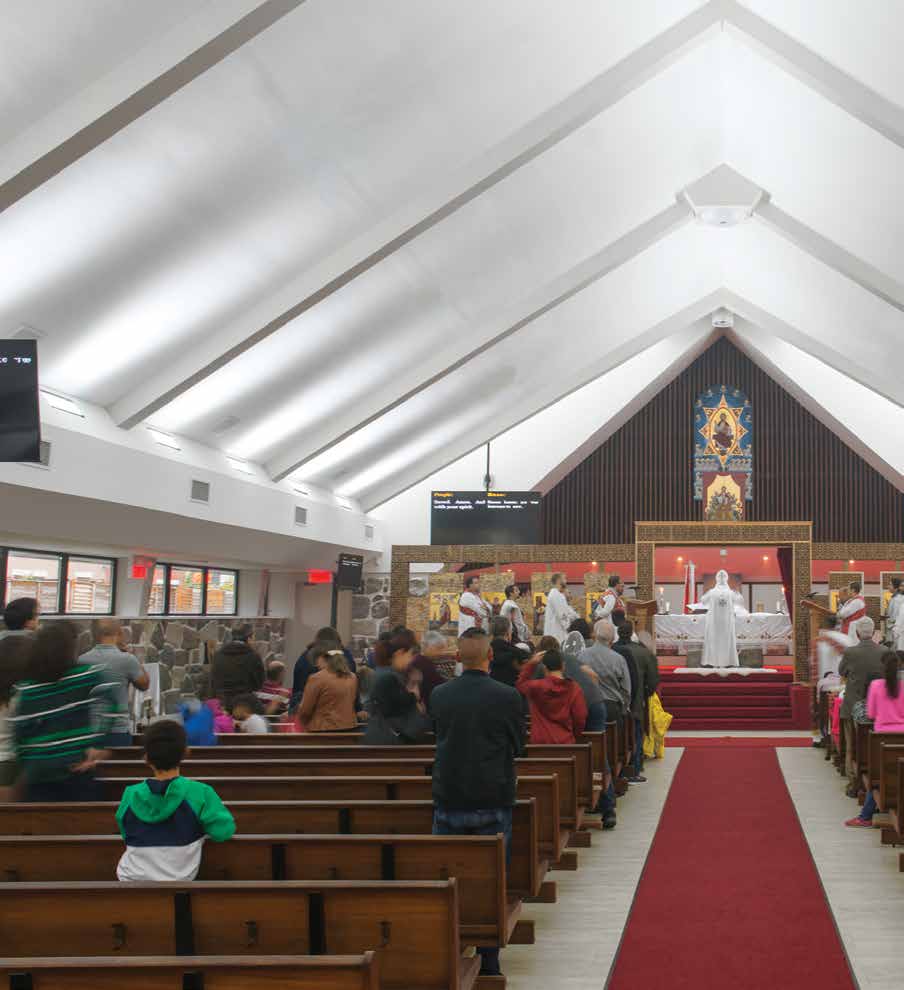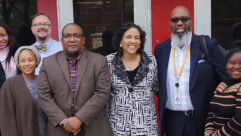

In a serene setting along the shores of Lac SaintLouis, Saint Peter and Saint Paul Coptic Orthodox Church is the spiritual home for hundreds of Coptic Christians in Montreal’s West Island neighborhoods. As a missionary church, they are devoted to spreading the gospel and fostering a community of Christians—both in person and online.
When Saint Peter and Saint Paul’s opened their new facility in 2015, the young parish took the opportunity to integrate technology in order to engage their congregation, including the ability to stream their services live to a wide online audience to give them a similar experience as those attending the services in person.
Over 300 people attend services on a regular basis, and according to Bishoy Ishak, a Saint Peter and Saint Paul congregant who takes care of in-house technical needs, the goal is outreach. “Streaming lets us reach local shut-ins, the elderly, and the disabled and opens up our message to people around the world—in a way that’s affordable for the church and convenient to our members.” The church streams their services in their entirety, including Vespers and Masses that are typically about two and half hours.

“When we started streaming to YouTube we had an iPad that we mounted on a tripod,” Ishak recalls with a laugh. “It looked pretty silly, and you always had to supervise the children.
The congregation was already using technology in order for the deacons and priests to present material and translations on two 90” monitors that hang above the pews. The screens serve up content from a diocese-developed app called the Coptic Reader—like a big Kindle that turns the pages as the deacons read. It carries English translations to keep younger English-speaking congregants engaged and is available through the iPad and sent to the screens via Apple TV to a Shiny Bow to the displays. “The Coptic Reader works with Android or Apple so it could have been a Chromecast,” Ishak says without a trace of irony even though he’s talking about text that is thousands of years old.
Before the iPad, Coptic congregations were taping sermons for decades—“certain pastors or priests have people who like to follow their particular sermons,” he explains. In time, the library moved to CD and the capture device was a DSLR. In 2010 they began to upload to YouTube. “Mostly for special occasions, Advent, Palm Sunday, Easter.”
Then shortly after moving into a new building and installing PTZ cameras, the iPad moved from being a capture device being a handheld interface to serve PowerPoints and choose camera angles.
The in-church set-up consisted of four PTZ cameras located throughout the sanctuary, allowing every event to be shot from multiple angles and capture unique aspects of every ceremony. The cameras feed into a simple Hikvision NVR located in an adjacent computer room, where a deacon or volunteer can pan, tilt, and zoom each camera, and switch to provide the best shot for the viewer. The output of this switcher had been sent to a Vidiu Teradek encoder, which was intended to easily push the video to the web.
However, due to disruptions in the video caused by switching, the video encoder would freeze and stall, causing streaming to fail. “The NVR could see the camera but there was no footage,” he recalls. It drove us nuts for about four months.
There were also complications around streaming protocols, preventing them from using multiple platforms, and limited them in reaching more people. With Easter—a major holiday in the Coptic calendar—approaching, the church decided that they needed a better, more reliable solution after a year of working around their current limitations.
“The initial solution was to pair the encoder with another computer—but we didn’t want a computer and a video card encoder, we wanted a hardware encoder.
Ishak learned about the new Monarch LCS, a dedicated H.264 encoder originally designed for lecture capture, offering high quality streaming, and production capabilities.
The Monarch’s built-in frame synchronizers allowed it to correct the signal issues due to switching, ensuring uninterrupted streaming. Working with the existing HDMI switcher, the LCS also offered the freedom to transition to an SDI input if needed. The Monarch LCS seamlessly integrated within their environment, instantly working with their existing set-up, while also supporting RTMP—necessary to live stream to YouTube.
“What really sold us on the Matrox was the side-by-side display.” That, he says, opened up some great possibilities to enhance both the in-church and online experience. Congregants who watch online now see side-by-side of the live service and the text of the readings, with the Monarch LCS second input and its Side-by-Side production mode support.
“We encourage our congregants to follow the text during the service—to meditate on it and explore it in more depth,” said Father Peter Saad, priest of Saint Peter and Saint Paul. “We play this text on screens in the sanctuary so everyone can follow the progression.

To accomplish this, the church now passes the “Coptic Reader” app through the Monarch LCS’s second HDMI input. This not only allows them to pass the reader along to the screens throughout the sanctuary, but also provide a single side-by-side stream featuring both the camera feed and the “Coptic Reader.” When pushed to the web, this presentation format ensures a more complete worship experience for remote parishioners.
Beyond its ability to stream side by side, the Monarch LCS has provided a consistently noticeable improvement in video performance and quality allowing the church to expand its reach. Its second encoder has allowed the church the capability to write to an external memory card as well for occasions where they want a hard copy of the service.
“Our volunteers and deacons had no trouble handling the transition to the LCS,” said Ishak. “With its intuitive user interface, the operation of the LCS is straight forward and very easy to stream live to the world.”
In fact, the Monarch LCS allowed the church to be up and running weeks before their Easter deadline. In the 4 months since moving to the LCS, the church has successfully webcast its services to over 22,000 viewers.









